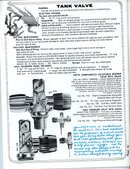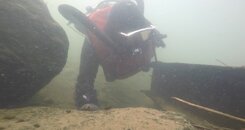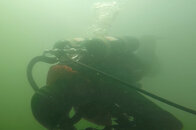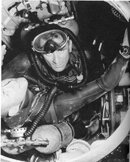The J-valve reversal is quite easy to do on double tanks. Here below are some photos of that, showing me and my twin 42s with the J-valve reversed. One photo is from a book showing U.S. Navy divers in a submarine hatch, and one has the J-valve reversed.
To accomplish this reversal, simply assemble the center section of the manifold facing the other direction, and then move the harness bands so the harness is on the other side of the twins. For single tank J-valves, the reserve lever itself needed to be removed and placed in the reverse direction. Note, only a few single tank J-valves had this feature; Scubapro and Dacor were ones that could do this, if my memory is correct. The others (USD, Voit, etc.) could not be reversed as there were guides for the levers, and they only allowed the lever to be placed in the "out" direction.
I also have the ad for the Scubapro J-valve that can be changed from 300 to 600 psig.
When I was using J-valves, we would normally use the tanks to the reserve, then surface. This was never in an overhead situation (caves, ice or wrecks), but simply as a part of normal diving.
SeaRat








